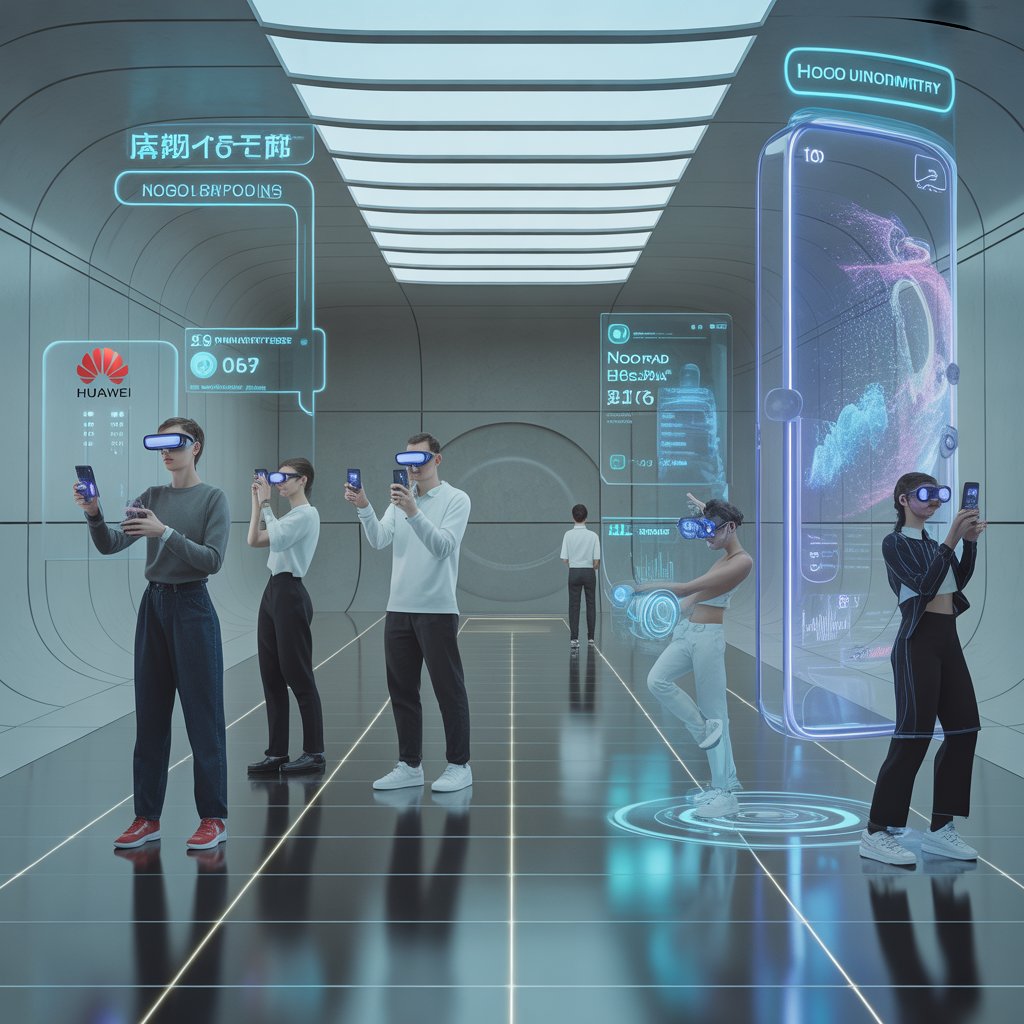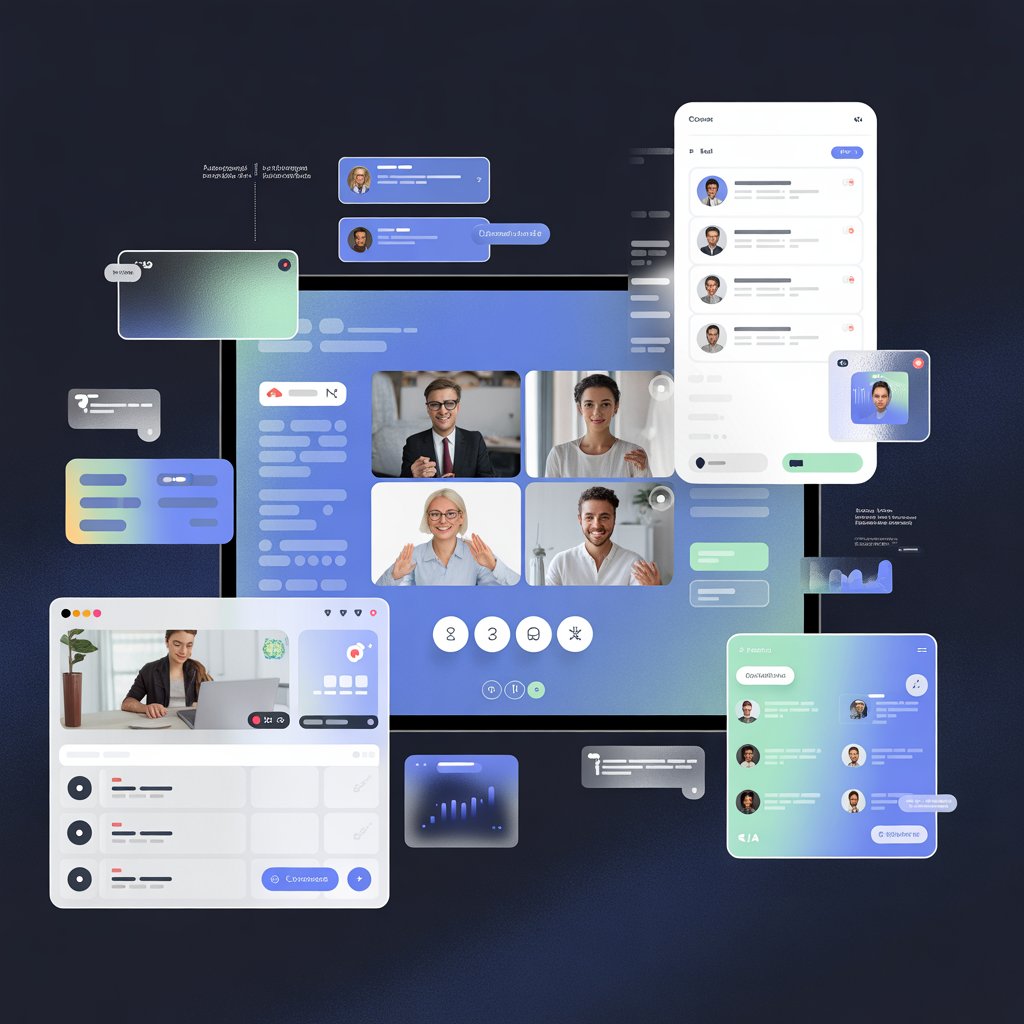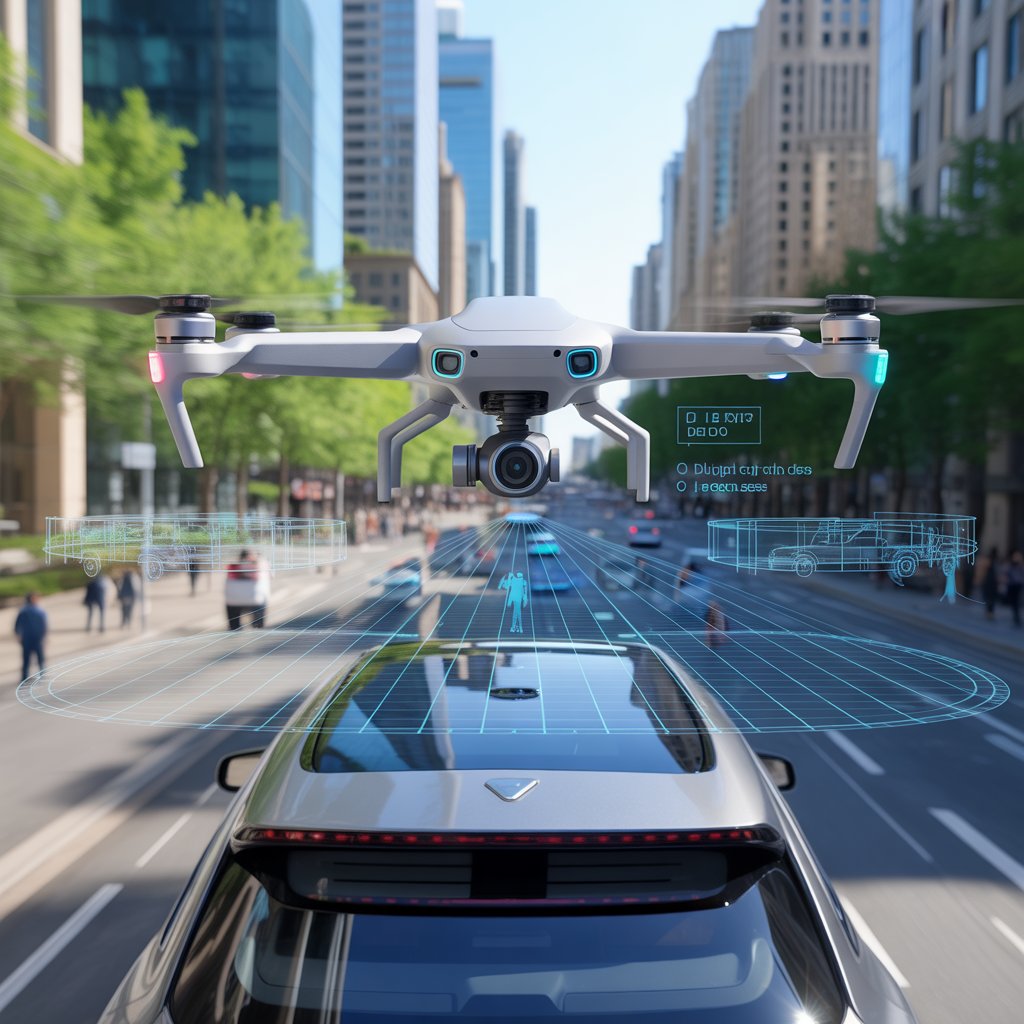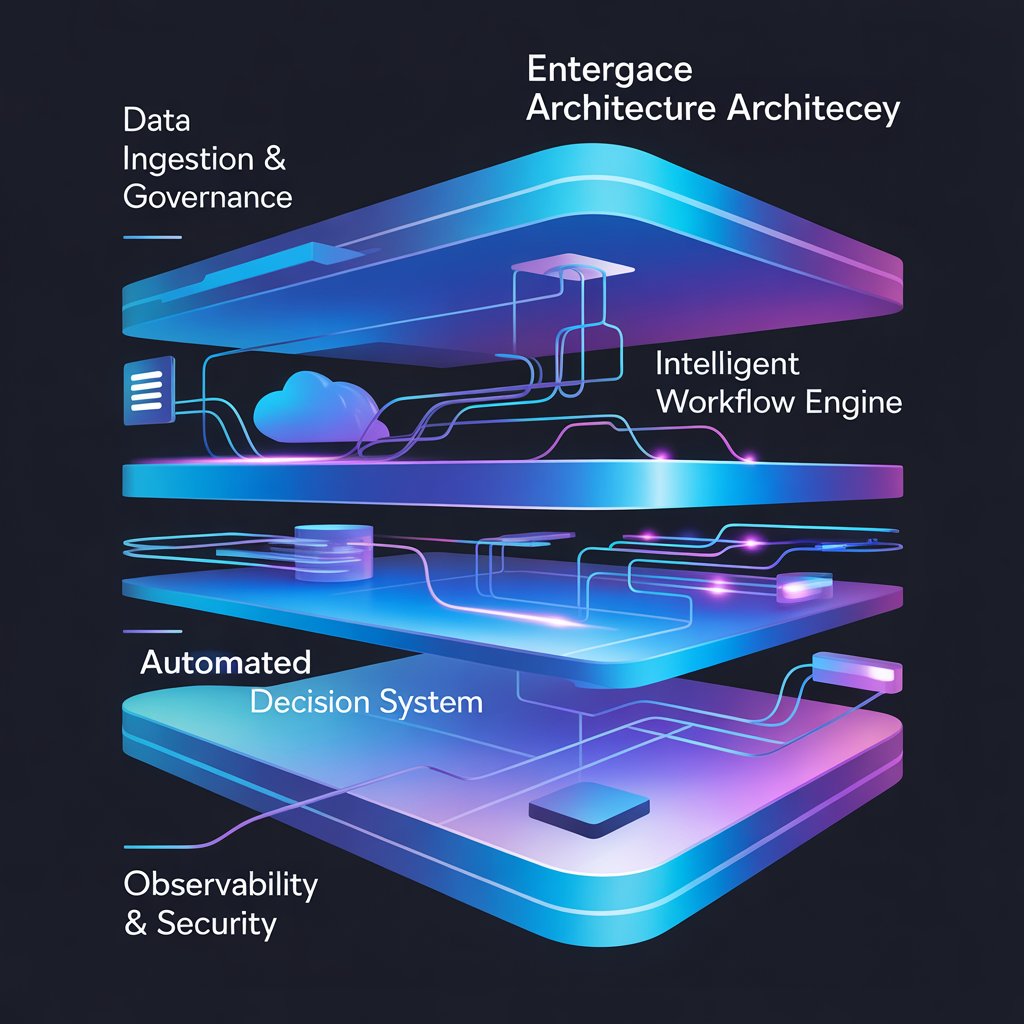Introduction:
Tech giants envision future beyond smartphones as a seamless blend of invisible intelligence and immersive worlds, where devices fade into the background of our lives. No longer chained to glowing screens, we’re hurtling toward an era of ambient computing, neural links, and always-on augmentation that’s as natural as breathing. From Apple’s spatial dreams to Meta’s holographic horizons, these visionaries are betting billions on post-smartphone technology that redefines human-computer interaction. In this expansive guide, we’ll unpack their bold strategies, spotlight wearable tech innovations and AI-powered devices, forecast the augmented reality future, and map out future tech trends 2030.
Thank you for reading this post, don’t forget to subscribe!Whether you’re a tech enthusiast or a business leader plotting your tech giants envision future beyond smartphones innovation strategy, discover how beyond mobile technology could transform daily life, work, and play—with practical examples, timelines, and tips to navigate the shift.
The Dawn of Post-Smartphone Technology: Why Smartphones Are on Borrowed Time
The smartphone, once the undisputed king of personal tech, is showing its age. Sales peaked in 2021, and by 2025, growth has flatlined as consumers crave something more intuitive. Enter post-smartphone technology: a paradigm where computation embeds into the environment, not a handheld slab. Tech giants envision future beyond smartphones like Google and Microsoft see this as the next $3 trillion frontier, fueled by AI’s maturation and hardware miniaturization, simultaneously doing away with the need for accessories and complications like using a PTA Tax Calculator for mobile device registration.
This isn’t sci-fi—it’s strategy. Apple’s Tim Cook has hinted at “spatial computing” as the evolution, while Meta’s Mark Zuckerberg demos AR prototypes that overlay digital info on reality without a phone in sight. The future of smartphones? It’s transitioning from central hub to peripheral player, handing the reins to ecosystems of sensors and services.
Signs the Smartphone Era Is Waning
Consider the data: Global smartphone shipments dipped 2% in Q2 2025, with AR/VR headset sales up 45% year-over-year. Users are fatigued by notifications and battery anxiety. Post-smartphone tech promises liberation—think voice, gesture, and thought as inputs, powered by edge AI that processes locally for privacy.
Bullet-point harbingers:
- Saturation: 85% of adults own smartphones; upgrades slow to every 3-4 years tech giants envision future beyond smartphones.
- Health Backlash: Screen time averages 7 hours daily, sparking “digital detox” movements.
- Investment Shift: $150B poured into AR/AI hardware in 2024 alone.
- Regulatory Push: EU mandates for interoperable ecosystems favor modular devices.
These trends signal a pivot, where the future of digital communication evolves from taps to telepathy-like flows.
 How Tech giants envision future beyond smartphones in Augmented Reality
How Tech giants envision future beyond smartphones in Augmented Reality
Tech giants envision future beyond smartphones through augmented reality (AR) as the primary lens for the world. AR isn’t just filters on Snapchat—it’s a persistent overlay of data, navigation, and interactions on physical space. By 2030, AR glasses could ship 15 million units annually, eclipsing phone growth.
Meta leads with Orion, a holographic prototype that projects 3D content hands-free, blending calls, maps, and entertainment. Google’s Project Astra integrates Gemini AI into glasses for contextual whispers—like identifying a plant mid-hike. Apple’s Vision Pro 2, slated for 2026, shrinks to sunglass size with eye-tracking for intuitive control.
This augmented reality future isn’t uniform; it’s personalized. Imagine commuting: AR highlights optimal paths, translates signs in real-time, and even simulates conversations with avatars of distant colleagues.
Step-by-Step: Building an AR-Ready Lifestyle
Transitioning to AR demands prep—here’s how:
- Assess Compatibility: Check if your ecosystem (e.g., Apple ID) supports ARKit or tech giants envision future beyond smartphones ARCore.
- Start Small: Use free apps like IKEA Place for virtual furniture trials.
- Invest in Hardware: Begin with affordable Meta Ray-Bans ($299) for AI audio cues.
- Train Your Brain: Practice gesture controls via apps to master human-computer interaction.
- Secure Your Space: Enable privacy modes to limit data sharing in public AR overlays.
A real-world example: Surgeons at Johns Hopkins use Microsoft HoloLens for AR-guided operations, reducing errors by 20%—a glimpse of AR’s precision in next-generation devices.
| AR Pioneer | Key Vision | 2030 Projection |
|---|---|---|
| Meta (Orion) | Holographic social spaces | 500M users in metaverse AR |
| Google (Astra) | AI contextual awareness | 70% of searches via voice/gesture |
| Apple (Vision Pro 2) | Seamless spatial computing | $100B revenue from AR ecosystem |
| Microsoft (HoloLens 3) | Enterprise holograms | 40% adoption in manufacturing |
Wearable Tech Innovations: The Silent Revolution
Wearable tech innovations are the stealth mode of beyond mobile technology, embedding smarts into jewelry, clothes, and skin. No screens needed—just vibes from your wrist or ear. By 2025, shipments hit 500 million units, blending health monitoring with AR feeds.
Samsung’s Galaxy Ring tracks biometrics 24/7, syncing with AI for predictive wellness tech giants envision future beyond smartphones alerts—like warning of stress before it spikes. Oura’s Gen4 ring evolves with neural sensors for mood mapping, tying into the future of smartphones’ health data legacy. Google’s Pixel Watch 3 adds AR passthrough via partnered glasses, turning your arm into a control panel.
These aren’t gadgets; they’re extensions. In fitness, wearables like Whoop 5.0 use AI to customize workouts, adjusting in real-time based on recovery data.
Pros and Cons of Wearable Adoption
| Aspect | Pros | Cons |
|---|---|---|
| Health Insights | Real-time vitals for proactive care | Data privacy risks from constant tracking |
| Convenience | Gesture-free interactions | Battery life limits (avg. 2-3 days) |
| Integration | Seamless with AR ecosystems | High cost ($200-800 per device) |
| Customization | AI-personalized alerts | Learning curve for advanced features |
- Neural Feedback: Haptics that “feel” notifications as subtle pulses.
- Eco-Materials: Biodegradable bands reducing e-waste.
- Cross-Device Sync: One wearable controls home IoT.
- Affordability: Sub-$100 options by 2027.
As human-computer interaction matures, wearables bridge the gap to fully ambient experiences.
 AI-Powered Devices: Intelligence Without the Interface
AI-Powered Devices: Intelligence Without the Interface
AI-powered devices are the brain trust of the post-smartphone era, operating autonomously to anticipate needs. Amazon’s Alexa+ rolls out in 2025 as a “fluid companion,” handling tasks via ambient speakers or earbuds without prompts. Tech giants envision future beyond smartphones Microsoft’s Copilot evolves into device-agnostic agents, booking flights from a glance at your calendar.
OpenAI’s rumored “Orion” hardware (not Meta’s) envisions earpieces that whisper insights, like summarizing a meeting mid-convo. By 2030, agentic AI—self-acting software—could manage 30% of daily decisions.
Example: In retail, AI glasses from Snap scan shelves, suggesting deals overlaid on your view—boosting impulse buys by 25% in pilots.
Implementing AI in Everyday Tech: A Guide
- Choose Your Agent: Start with free tiers like Google’s Gemini Nano for on-device processing.
- Set Boundaries: Define “trust zones” for sensitive tasks, like finance.
- Integrate Ecosystems: Link to smart homes for automated routines.
- Monitor Ethics: Use tools to audit AI biases quarterly.
- Scale Up: Upgrade to premium hardware for advanced predictions.
This hands-off approach redefines the future of digital communication, from silent negotiations to empathetic bots.
Tech giants envision future beyond smartphones: Brain-Computer Interfaces
Tech giants envision future beyond smartphones extending to the mind with brain-computer interfaces (BCI). Neuralink’s 2025 trials implant chips for thought-controlled cursors, aiming for full telepathic typing by 2028. Synchron’s stent-based BCI, FDA-cleared, lets paralyzed users tweet via thoughts—Meta and Apple scout similar non-invasive tech.
By 2030, BCI could enable “knowledge downloads,” like instant language learning, blurring lines in human-computer interaction. Ethical hurdles loom: consent, hacking fears, but pilots show 90% accuracy in basic commands.
Case in point: A gamer with ALS uses BCI to compete, scoring high in esports—proving accessibility wins.
Ethical Roadmap for BCI Adoption
- Consent Protocols: Mandatory opt-ins with revocable data.
- Bias Audits: Regular scans for neuro-diverse inclusivity.
- Hybrid Modes: Blend with wearables for gradual entry.
- Global Standards: UN-backed regs by 2027.
These safeguards ensure BCI enhances, not exploits, our neural future.
Revolutionizing Human-Computer Interaction: Gesture to Thought
Human-computer interaction leaps from swipes to seamless symbiosis in next-generation devices. Spatial computing, per Gartner, tops 2025 trends, with gestures and eye-tracking replacing buttons. Meta’s Orion uses hand waves for menu navigation; Apple’s eye-gaze selects apps.
Voice evolves too: Multilingual translation in real-time, as Apple, Google, and Meta collaborate on universal interpreters. By 2030, 60% of interactions could be non-verbal.
Practical tip: Train with free VR apps to hone spatial awareness—key for AR fluency.
| Interaction Type | Current | 2030 Vision |
|---|---|---|
| Input | Touch/voice | Thought/gaze |
| Output | Screens/speakers | Haptics/projections |
| Feedback | Alerts | Predictive nudges |
| Accessibility | Apps | Neural inclusivity |
The Future of Digital Communication: Connected Without Devices
The future of digital communication ditches silos for omnipresent flows. WhatsApp’s AR calls let avatars join from holograms; Zoom’s 2025 update beams participants into your room via glasses.
AI mediates: Bots negotiate schedules, translating nuances across cultures. In business, Microsoft’s Mesh enables virtual boardrooms where data visualizes in 3D.
Challenges? Bandwidth—5G/6G rollouts critical, with 80% coverage by 2028.
Example: Remote teams use AI companions for sentiment-synced chats, cutting miscommunications by 40%.
Upgrading Your Comm Stack
- Adopt Multi-Modal Tools: Switch to AR-enabled Slack.
- Privacy First: Use end-to-end for neural inputs.
- Hybrid Events: Blend physical/virtual with spatial invites.
- AI Literacy: Learn prompt engineering for better bot interactions.
- Test Pilots: Join beta programs from Meta or Google.
This connected web fosters global empathy tech giants envision future beyond smartphones envision future beyond smartphones.
Beyond Mobile Technology: Ambient and Edge Computing
Beyond mobile technology thrives on ambient computing—tech that anticipates without activation. Amazon’s 2025 Echo hubs sense mood via mics, adjusting lights or music. Edge computing processes data locally, slashing latency for AR.
Qualcomm’s Snapdragon X Elite powers fanless laptops that double as AR hubs. By 2030, 90% of compute happens at the edge.
In smart cities, ambient sensors guide traffic; in homes, fridges reorder groceries via AI.
Bullet innovations:
- Zero-Touch Setup: Devices pair via proximity.
- Energy Harvesting: Solar skins for eternal power.
- Quantum Security: Post-quantum crypto for unhackable nets.
- Bio-Feedback Loops: Tech adapts to biometrics.
This invisibility reclaims focus.
Next-Generation Devices: Hybrids and Implants
Next-generation devices hybridize forms: Snap’s Spectacles 5 fuse AR with earbuds for audio overlays. Implants like Neuralink’s “Telepathy” aim for 1M users by 2030.
Foldables persist as bridges, but true next-gen? Bio-integrated chips monitoring health 24/7.
Example: Abbott’s Lingo sensor, a wearable glucose tracker, prevents diabetes spikes—scaling to neural variants.
| Device Hybrid | Lead Giant | Killer Feature |
|---|---|---|
| AR Earbuds | Contextual audio AR | |
| Neural Rings | Neuralink | Thought-to-text |
| Haptic Suits | Meta | Full-body immersion |
| Edge Hubs | Microsoft | Ambient AI orchestration |
 Future Tech Trends 2030: A Holistic Outlook
Future Tech Trends 2030: A Holistic Outlook
Future tech trends 2030 weave AI, AR, and BCI into a tapestry of sustainability and equity. McKinsey forecasts $15T economic boost from these shifts. Green computing mandates carbon-neutral devices; inclusive design ensures access for all.
Predictions:
- Metaverse Maturity: 2B users in persistent worlds.
- AI Governance: Global pacts on ethical deployment.
- Health Integration: Wearables predict diseases years ahead.
- Space Synergy: AR for Mars missions via Starlink.
From MWC 2025’s Wi-Fi earbuds to CES 2030’s neural demos, the trajectory excites.
FAQs: Tech Giants Envision Future Beyond Smartphones
What do Tech Giants Envision Future Beyond Smartphones looks like?
Tech giants envision future beyond smartphones as an AR-dominated world where glasses and AI companions handle everything from navigation to social chats. Think Meta’s Orion projecting holograms or Apple’s spatial ecosystem—it’s all about ditching screens for immersive, always-on experiences that feel magical yet practical.
How will wearable tech innovations change daily life by 2030?
Wearable tech innovations will make health and productivity second nature, like rings that whisper workout tweaks or glasses overlaying recipes while you cook. With AI-powered devices predicting needs, you’ll spend less time managing tech and more living—expect 50% better wellness outcomes from seamless tracking.
Is the augmented reality future ready for mainstream adoption?
The augmented reality future is heating up, with affordable glasses from Google and Snap hitting shelves in 2026. It’s not just gaming; it’s transforming work with holographic meetings and shopping via virtual try-ons, making human-computer interaction as natural as glancing around.
What’s the tech giants innovation strategy for AI-powered devices?
Tech giants innovation strategy focuses on agentic AI in next-generation devices, like Microsoft’s Copilot autonomously booking your travel. It’s about empowerment—devices that learn your habits, secure your data, and integrate with beyond mobile technology for a frictionless future of digital communication.
How does post-smartphone technology impact human-computer interaction?
Post-smartphone technology supercharges human-computer interaction with gestures, thoughts, and ambient cues, reducing cognitive load. Imagine Neuralink enabling paralyzed users to “type” at 100 wpm—it’s inclusive, intuitive, and sets the stage for future tech trends 2030 where tech anticipates you.
Will the future of smartphones include brain-computer interfaces?
Absolutely, the future of smartphones evolves into brain-computer interfaces as a core pillar, with Neuralink and Synchron leading non-invasive pilots. By 2030, these could enable silent calls or instant translations, blending seamlessly with wearable tech innovations for a truly connected mind.
What are key future tech trends 2030 to watch now?
Key future tech trends 2030 include spatial computing dominance and ethical AI governance, driven by giants like Amazon’s ambient hubs. Start prepping with AR apps today—it’s the shift to beyond mobile technology that’ll redefine productivity and play.
Conclusion: Embrace the Horizon tech giants envision future beyond smartphones Are Painting
In wrapping up, tech giants envision future beyond smartphones as a liberating tapestry of AR overlays, AI whispers, and neural symphonies—where post-smartphone technology dissolves barriers, wearable tech innovations guard our health, and AI-powered devices anticipate our whims. From the augmented reality future’s holographic handshakes to the nuanced dance of human-computer interaction, these visions promise a 2030 richer in connection and creativity, grounded in ethical, sustainable strides.
The question isn’t if this future arrives—it’s how you position for it. tech giants envision future beyond smartphones Dive into an AR demo, snag smart glasses, or audit your tech stack today. The beyond mobile technology revolution waits for no one; innovate now, and thrive in the dawn of tomorrow.





6 responses to “Tech Giants Envision Future Beyond Smartphones: 5 Bold Bets”
[…] Over the next sections, we’ll dissect the top Zym Mobile models, dive into features like Zym Mobile battery life and camera quality, and arm you with buying tips. Ready to level up? Let’s roll. And if you’re pondering the evolution of devices like these, dive into how tech giants envision a future beyond smartphones. […]
[…] intrusive design, and Neuralink’s implants spark ethical debates about cognitive modification. Tech giants must prioritize user trust and affordability to drive […]
[…] teams are juggling more channels and more data — and the tools you choose determine how well you can turn activity into results. Modern tools reduce manual work, automate repetitive […]
[…] light glasses provide an effortless way to protect your eyes while maintaining the digital lifestyle you rely on every day. Combined with […]
[…] features free and intuitive, ultimately helping you communicate your story more effectively through visually compelling backgrounds that resonate and […]
[…] this transition equips you for a device-agnostic tomorrow. For broader context, explore our Tech category or Future tech […]